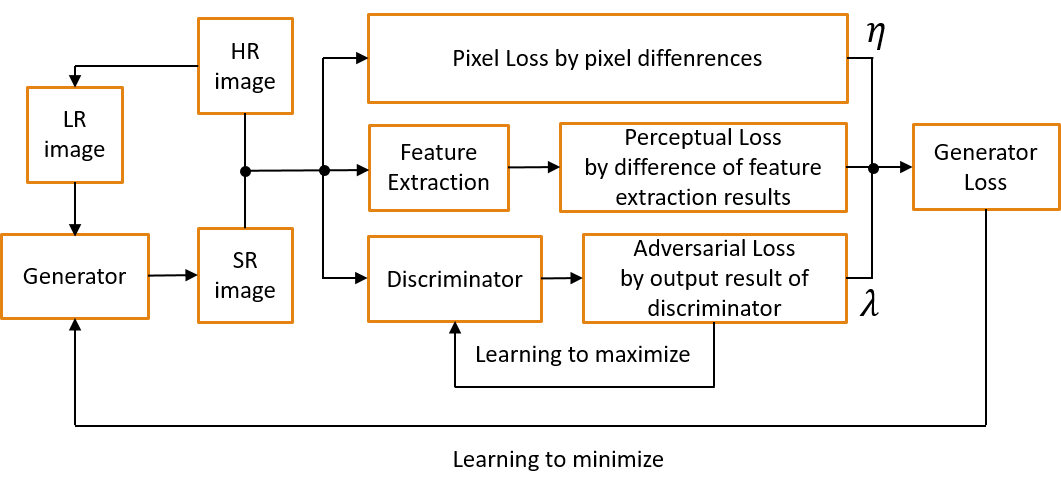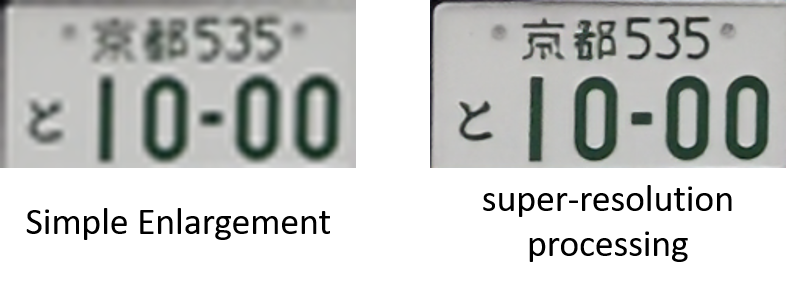Welcome to Image Processing Lab. page!
License plate image processing
In recent years, the widespread use of in-vehicle cameras and surveillance cameras has increased the opportunities to handle images. Since the images captured by these devices often have low resolution, there is a need for super-resolution technology that can generate higher resolution images that are clearer and easier to view. In this study, we develop a super-resolution processing program for license plate images.
Background of this research
This study uses super-resolution technology to facilitate text reading. While the use of super-resolution technology enlarges images and makes text easier to read, it also emphasizes noise and blurring, so it is necessary to develop a program that minimizes these effects.
Super-resolution processing
A deep learning method called generative adversarial learning (GAN) is used to perform super-resolution processing. The procedure is shown below.

Fig.1: Super-resolution Processing Procedure

Fig.2: Experimental results of super-resolution processing
Research contents
Our laboratory studies the following aspects of super-resolution processing programs
- Super-resolution accuracy improvement: Aim to improve the accuracy of super-resolution processing in order to produce higher resolution images.
- Faster processing: Aim to speed up processing in order to be able to run on a variety of devices.
- Application development: Aiming for general use by combining a license plate detection program with a character recognition program.